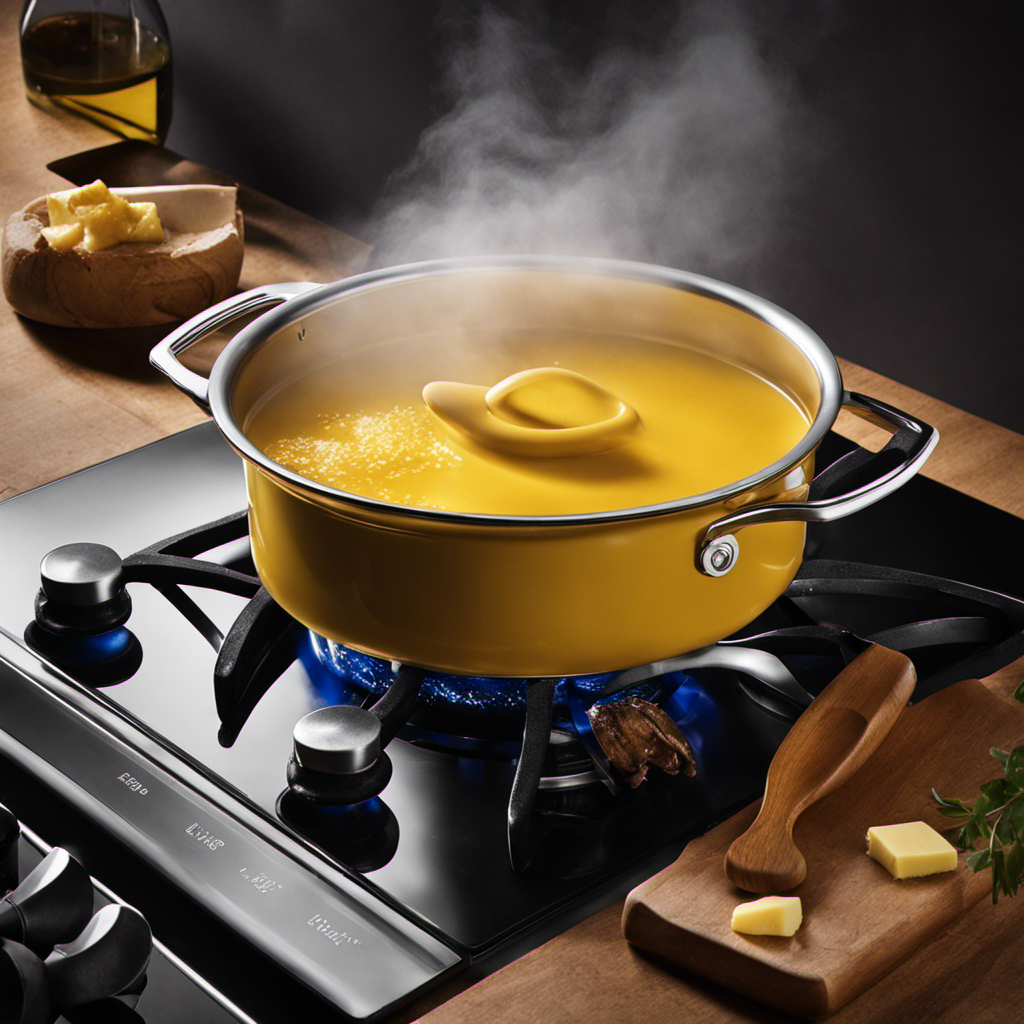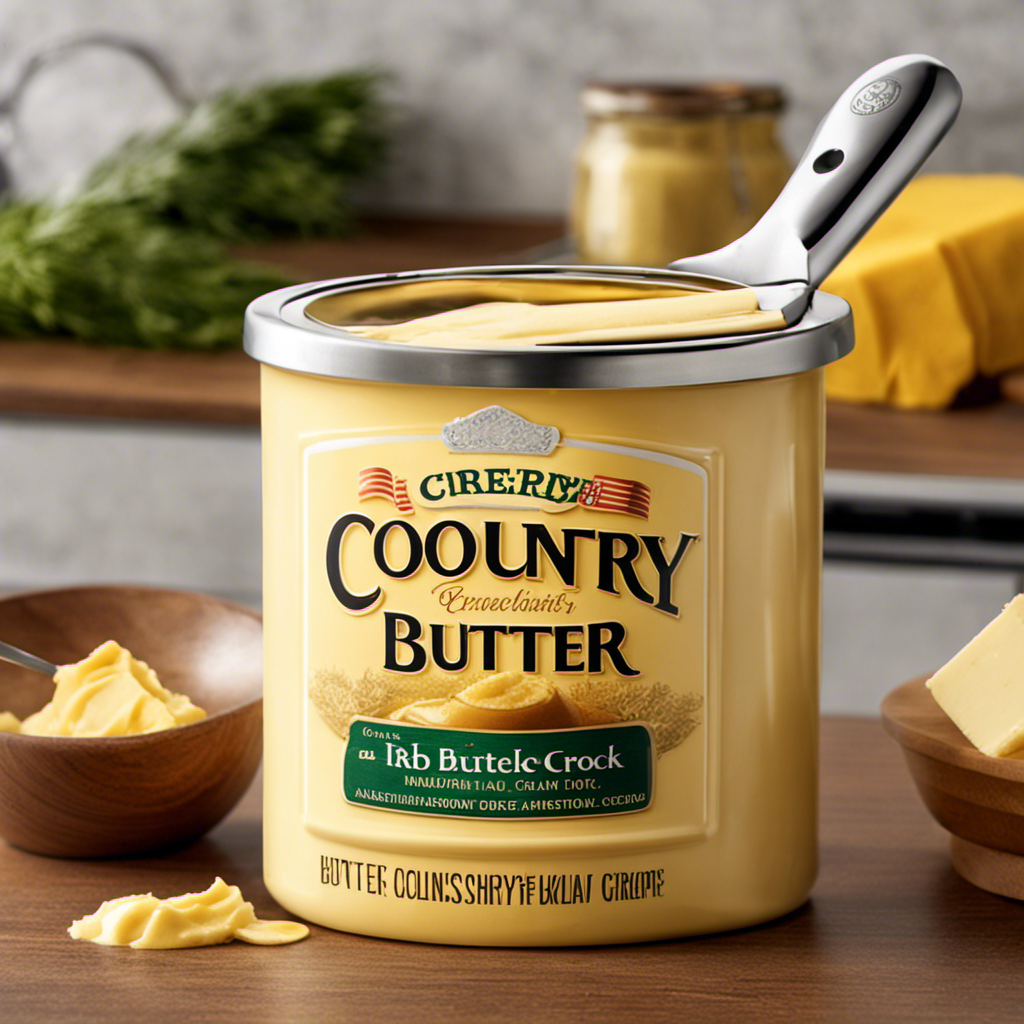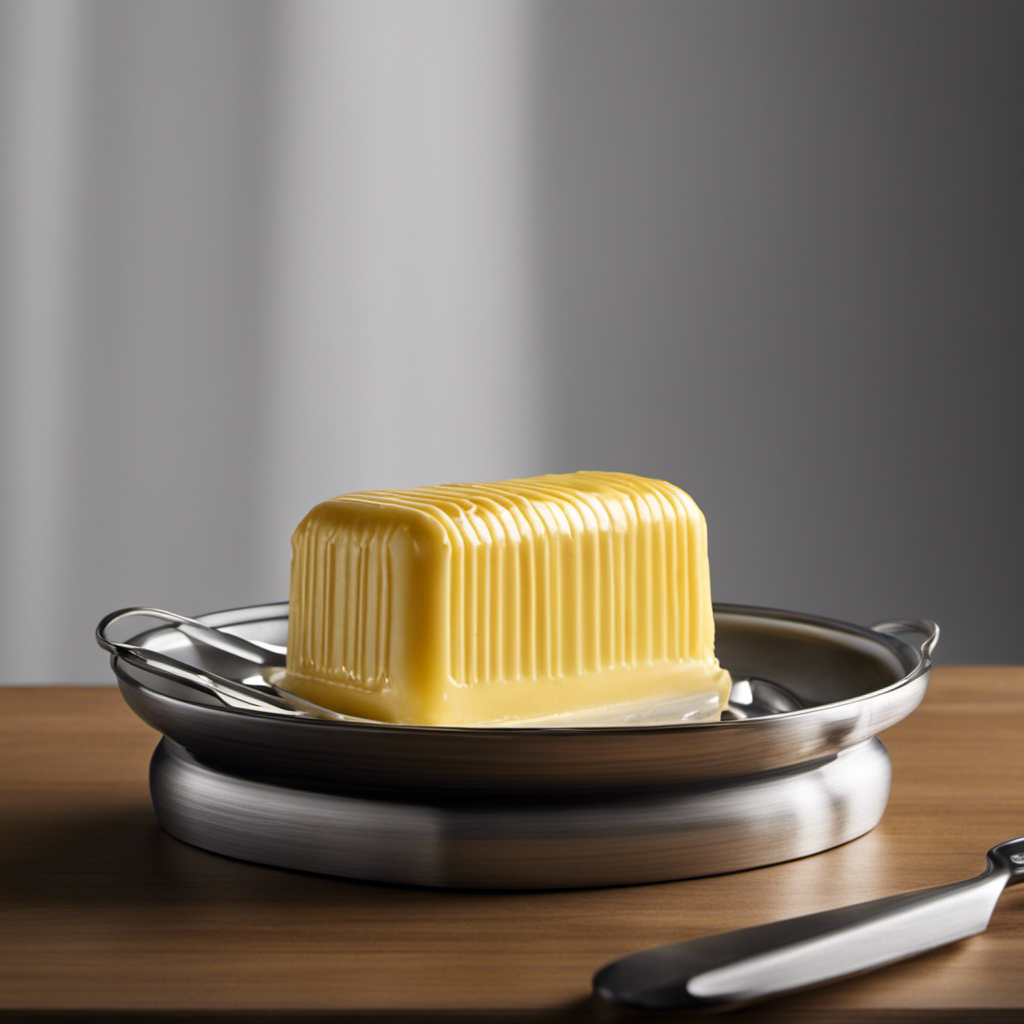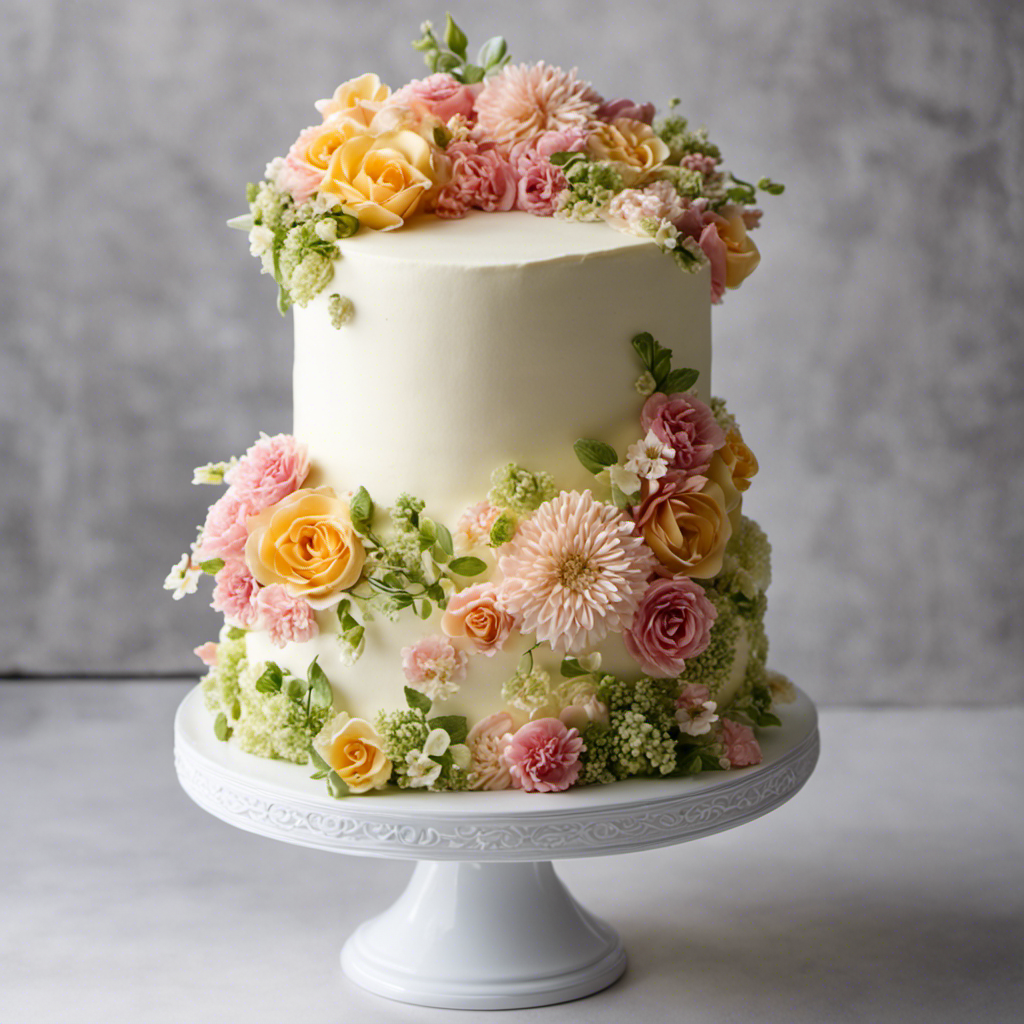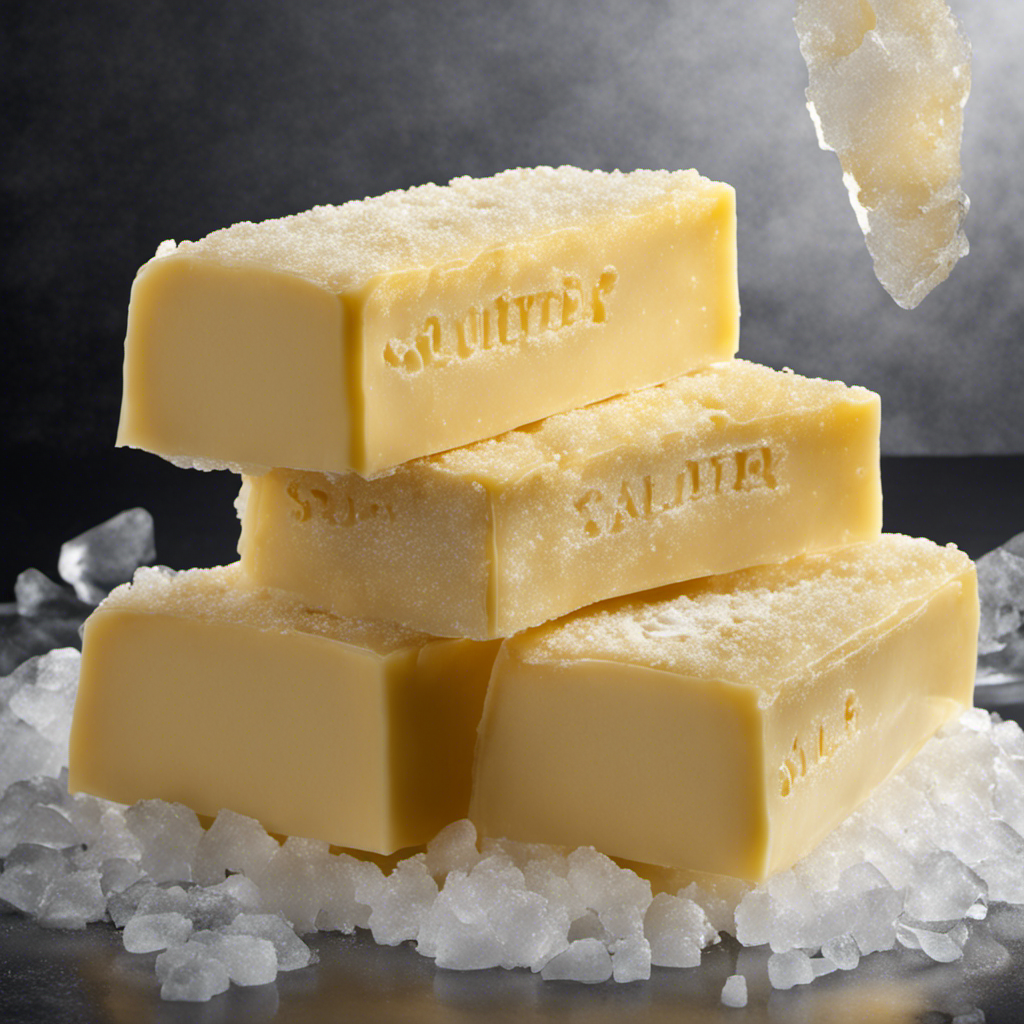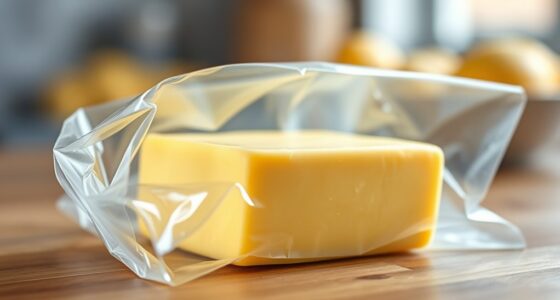I have always been curious about how long it takes to clarify butter. As it turns out, the answer is not as simple as I had initially thought.
In this article, we’ll delve into the equipment needed, the preparation process, and the factors that can affect the time required for butter clarification.
So, if you’re looking to achieve perfectly clarified butter, stick around because we’re about to dive into the scientific nitty-gritty of this culinary technique.
Key Takeaways
- Clarifying butter involves slowly melting it over low heat and straining it through a fine mesh strainer.
- Skimming off the foam that forms on the surface helps remove milk solids and impurities, resulting in a clearer finished product.
- The time required for butter clarification can vary based on factors like butter quality and impurities, so constant monitoring is crucial.
- Chilling the melted butter, skimming off remaining impurities, and straining it through a fine mesh strainer ensure a smooth and clear clarified butter.
Equipment Needed for Clarifying Butter
I’ll need a saucepan and a fine mesh strainer to clarify the butter.
Clarifying butter is a process that removes impurities such as milk solids and water, leaving behind pure, golden clarified butter.
There are different methods for clarifying butter, each with its own advantages and disadvantages.
One method involves slowly melting the butter in a saucepan over low heat. As it melts, the milk solids sink to the bottom, and the clear, clarified butter can be carefully poured off the top.
Another method is to melt the butter and then strain it through a fine mesh strainer to remove any solids. This ensures a smoother, more refined clarified butter.
Regardless of the method used, clarifying butter is an essential technique in cooking and baking, providing a clear and pure fat for various culinary applications.
Preparing the Butter for Clarification
First, I’ll start by melting the butter in a saucepan over low heat. The process of clarifying butter involves removing impurities, such as milk solids and water, to obtain a clear, golden liquid. As the butter melts, the water content evaporates, and the milk solids separate and settle at the bottom of the pan. It’s essential to keep the heat low to prevent the butter from browning or burning.
Once the butter has completely melted, I carefully skim off the foam that forms on the surface. This foam consists of the milk solids and impurities that rise to the top during the melting process. Removing the foam ensures a clearer and purer finished product.
The Process of Clarifying Butter
Once the butter has melted, I carefully skim off the foam that forms on the surface.
Clarifying butter is a process that removes impurities and solids from the butter, resulting in a pure golden liquid.
There are different methods of clarifying butter, but the most common one involves slowly melting the butter over low heat and then straining it through a fine mesh sieve or cheesecloth.
The benefits of using clarified butter in cooking are numerous. Firstly, it has a higher smoke point than regular butter, making it ideal for high-heat cooking methods like sautéing and frying.
Secondly, it has a longer shelf life as the impurities and solids have been removed.
Lastly, clarified butter has a rich and nutty flavor that adds depth to dishes.
Factors Affecting the Time Required for Butter Clarification
To determine the time required for butter clarification, I heat the butter over low heat and observe the rate at which the impurities separate from the liquid. Time management is crucial in this process as it directly affects the quality of the clarified butter.
The temperature control plays a vital role as well. By maintaining a low heat, the butter gradually melts, allowing the impurities to rise to the surface. It’s important to avoid overheating as it can lead to the burning of the butter solids, resulting in a bitter taste.
The time required for clarification can vary depending on the quality of the butter and the impurities present. Generally, it takes around 20-30 minutes for the impurities to completely separate, but it’s essential to constantly monitor the process to achieve the desired result.
Tips for Achieving Perfectly Clarified Butter
I find that using a fine mesh strainer helps me achieve perfectly clarified butter by removing any remaining impurities.
To achieve clarity and perfection in my clarified butter, I follow these techniques:
-
Chilling: After melting the butter, I refrigerate it for a few hours until it solidifies. This allows the impurities to sink to the bottom, making it easier to separate them later.
-
Skimming: Once the butter has solidified, I carefully skim off the top layer, which contains any remaining impurities. This step ensures that my clarified butter is free from any unwanted particles.
-
Straining: Using a fine mesh strainer, I strain the melted butter to remove any small impurities that may have been missed during the skimming process. This final step guarantees a smooth and clear clarified butter.
Frequently Asked Questions
Can I Use Any Type of Butter for Clarifying?
I can use any type of butter for clarifying.
When making flavored clarified butter, different types of butter can be used to add unique flavors and aromas. For example, using salted butter can enhance the savory taste, while using unsalted butter allows for better control of the saltiness.
Clarifying different types of butter also offers various health benefits, as each type contains different levels of nutrients.
Can I Clarify Butter in a Microwave?
Well, clarifying butter in a microwave can be quite an interesting experiment. While it may seem convenient and speedy, the truth is that it can be a bit unpredictable.
The time it takes to clarify butter in a microwave can vary depending on the wattage of the microwave and the amount of butter you’re using.
It’s always best to follow tried and true alternative methods, like using a stove or double boiler, for a more consistent and controlled outcome.
Can I Reuse the Milk Solids Leftover From Clarifying Butter?
Reusing milk solids from clarified butter is possible and offers alternative uses. Once the butter is clarified, the milk solids can be strained and saved for various culinary purposes.
These solids can add flavor and richness to dishes like sauces, soups, or even baked goods. They can also be used as a spread or added to a hot beverage for a creamy texture.
The possibilities are endless when it comes to utilizing the leftover milk solids from clarified butter.
How Long Can Clarified Butter Be Stored?
Proper storage methods are key when it comes to preserving clarified butter. To answer the question at hand, clarified butter can be stored for an extended period of time if stored correctly. The storage duration will depend on factors such as the quality of the butter used and the storage conditions.
It’s recommended to store clarified butter in an airtight container in the refrigerator, which can extend its shelf life for several months.
Can I Add Flavorings or Spices to Clarified Butter?
Adding herbs and spices to clarified butter is a great way to infuse flavors into it. The process is simple and can be done by melting the butter, adding your desired herbs or spices, and allowing them to steep for a few minutes.
The clarified butter will absorb the flavors, enhancing the taste of your dishes. It’s important to strain out any solids before using the flavored clarified butter.
Conclusion
In conclusion, the process of clarifying butter can vary in time depending on factors such as the amount of butter being clarified and the desired level of clarity. However, with the right equipment and technique, one can achieve perfectly clarified butter that’s both precise and scientifically accurate.
So, why not embark on this culinary journey and experience the joy of creating beautifully clarified butter?
